BRB – ‘Razorback – First Bite’ (1987)
On The Trail Of The First Razorback: From Strife, Stray, And Nightwing To Brb
Curious phenomena occur as the decades roll by. A band of ye olde days has their name nicked without let or hindrance let alone checking, as with Strife, Skid Row, Budgie, (Arthur Brown’s) Kingdom Come, Quintessence, Forest, and an attempt (thwarted) on Medicine Head, which makes a dog’s dinner of cyber searching and desecrates nostalgia. Now, some even have to change names though the first to have it! One of the bands in this genealogical fog, in all fairness, didn’t actually become public due to circumstances beyond their control. Mores the pity as it mixed two storming 70s groups with their own distinctive sounds that deserve to be among any fan’s Hall of Fame.
Hunting the Razorback starts in the same west London school in 1966, when four pupils blagged its music room. Their moniker was soon fixed: Stray, because “the name suggests we didn’t have to stick to any particular path of music,” reveals the guitarist and later front-man Del Bromham, “we’d do whatever we felt was right for us. Also the name was small and would look bigger on posters!” This credo’s held good ever since. A trio plus vocalist, like Free and UFO, the same line-up lasted a decade. While Free were more constrained in developing blues to soul-rock, Stray mined another original sound from hard psych to all points west without being pinned to one except melodic hard rock interpretation. Famed for quite astonishing time-changes in each song, even when rocking full-tilt they retain a minstrel’s response to love, faith and life.
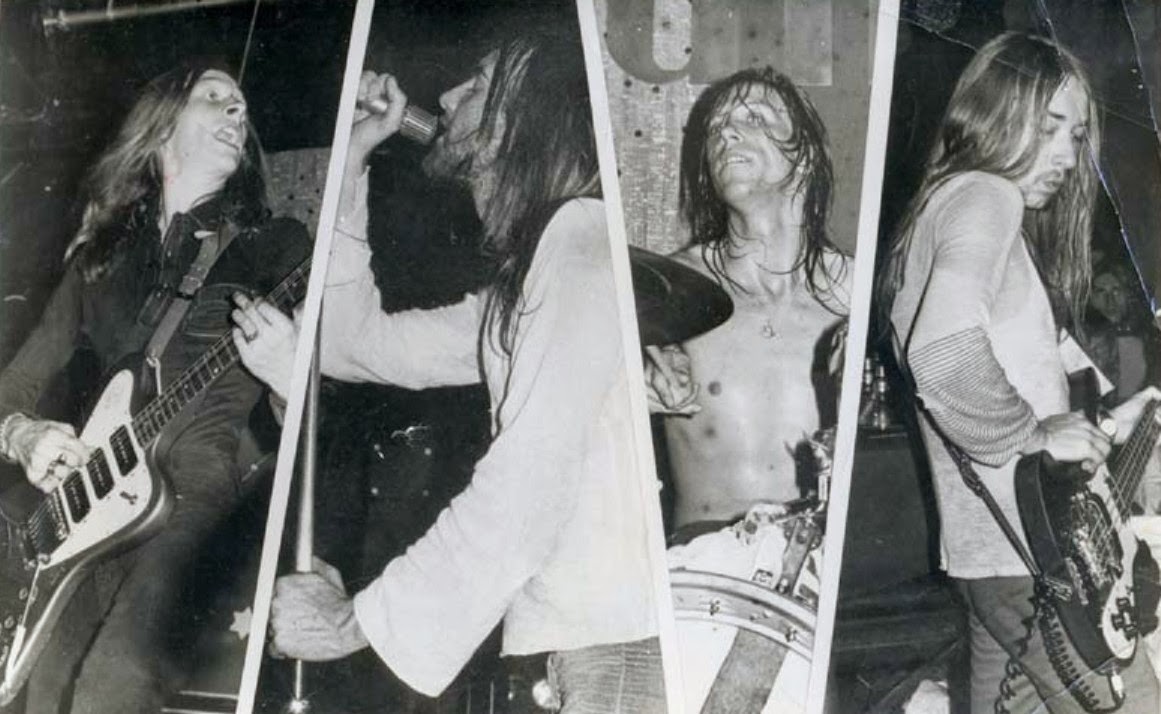
But what happens when your manager signs you as rockers to a label (Transatlantic) renowned for, er, folk? The same as happened there to Skin Alley and Jody Grind, in short. How else to explain fame eluding a hard-gigging band too often relegated to a footnote, as when Iron Maiden covered their All In Your Mind (they toured together this century). Maybe I’m being unfairly cruel, but in this T-shirt Age it seems those sporting IM know as little about rock as those who think Monet (or Banksy now) the epitome of art. (This litmus test applies to anything popular, e.g. football, comedy etc.) Stray’s fine hooks, riffs and lyrics, with elastic solos over a driving rhythm section went down a storm nationwide. Festivals and big tours too alongside top hitters. Their eponymous debut came out in 1970 when still mid-teens—they had to drink Cola in the pub after gigs! These guys must have taken caffeine by drip-feed enough to float a battleship. They did Reading in ’71 (Bromham dressed in a suit of mirrors requiring three roadies to lift him on stage) and the following year too after a T.V. debut on Disco 2 and first headline tour. One of the few bands to have their own lighting rig and pyrotechnics, at Weeley Festival the coastguard mistook it for a distress call for the lifeboat. In Belgium they blew a hole in the stage before Yes went on, probably no bad thing.
With ‘Saturday Morning Pictures’ and ‘Suicide’ they experimented with keyboards, brass and backing vocals without losing the boogie thread. ‘Mudanzas’ (1973), ‘Move It’ (1974, recorded in America), and ‘Stand Up And Be Counted’ (1975) were added to a fine catalogue that doesn’t know the word filler. Founding vocalist Steve Gadd left during recording that year and a second guitarist briefly added. A first stateside tour with Spirit and Canned Heat was followed by the debut British tours of Kiss and Rush. National exposure of a different (and irrelevant) ilk came when one of the infamous Kray family was briefly manager (or bouncer?). Stray called it a day in 1977 dogged by management failures. A new Del Bromham Band issued a 45 on Gull Records—another thread in this interwoven tapestry—and hit the road.
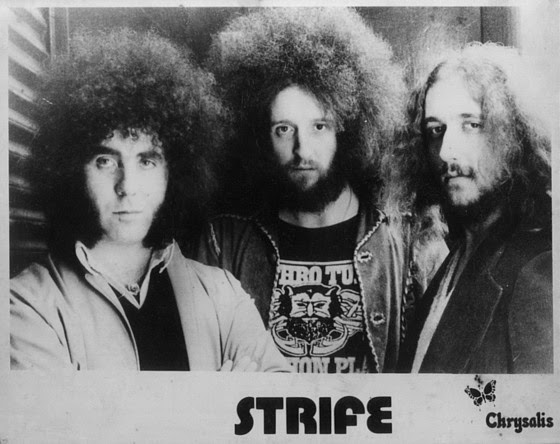
Meanwhile, on Merseyside during the fag-end of the sixties the original Strife settled as a trio with Gordon Rowley bass/vocals, Paul Ellison drums, and John Reid of The Klubbs—the latter’s archive issued in ’99 was LP of the year in ‘Record Collector’. He joined as second guitarist—his preference though you’d never guess it—but soon became the sole axeman. What he may lack in the vocal department—a review calls the singing “weak” but not to me—he more than made up for in the guitar role. In fact the trio shared vocals. A two-track demo ensued (1972), never featured in their later post-platter repertoire. Chrysalis in London turned down the LP offer, so Strife did what all great bands do: they went to California and signed to the same company there! (Spot the fib.) They had an invite to contact Apple executive Mal Evans during a film shoot in Los Angeles—they may have appeared as extras—but were left high and dry when the Beatles entourage decamped overnight without a forwarding address. Outside the abandoned studio, a pink limo U-turned and the soul singer Edwin Starr renewed contact after seeing Strife first in Liverpool’s Mardi Gras club. He called R. Dean Taylor, when the Canadian was an international number-oner for Motown (Gotta See Jane; Indiana Wants Me), to produce some of their debut album locally.
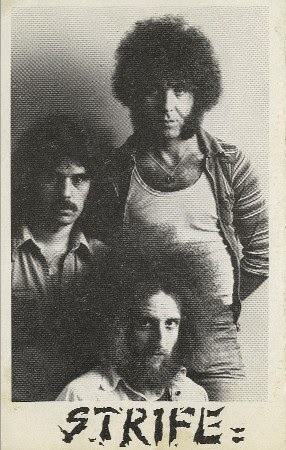
Titled after their longest track of 12 minutes, ‘Rush’ came out in 1975 on Chrysalis, the unchuffed London branch doing sod-all except wait-out their contract and blocking any chance of a follow-up. The seven-tracker remains one of the best and most atmospheric debuts in any period. Hard-driving rock with progressive and even soul elements, the build-ups to crescendos never disappoint. As one reviewer put it, “I dare you to listen to the title track, you won’t believe just three seriously overlooked gems of a band can do this!” The album hit the Virgin Top Ten, the best barometer back then, during a tour with the Baker Gurvitz Army. Returning stateside led to an agency offer to replace their Grand Funk Railroad, but Strife declined. Their high-energy reputation speaks volumes: at the famed Cavern Club they played two or three times a week and headlined its last night; Nicky Moore of Hackensack told me it was recorded and filmed but since lost.
Strife had problems gigging though: their reputation was such that bands didn’t want them as a support, they were so good that headliners could be blown off stage. And it’s no exaggeration. Procol Harum paid them not to play; Judas Priest pulled out; the Average White Band “turned plain nasty”, and Slade manager Chas Chandler forbid venues to ever again put them on the same bill. They filled Frankfurt’s Zoom Klub and the Marquee where I saw them once: when the lights were turned off the lanky afro-haired bassist climbed on top of the stacks mid-song then descended in a strobe for the finale. Reid with his flying-V wasn’t averse to standing on the bass drum either. But in keeping with their name, they were dogged by bad luck. Reid was injured in a stock car race then Rowley was electrocuted and nearly died until resuscitated by medics in the audience on their home patch.
A three-track EP was issued on their own label Outlaw until, finally freed from childishly churlish Chrysalis when Leo Sayer motivated, EMI re-released it. ‘Back To Thunder’ (1978) came out at last on Gull Records in yummy green vinyl, produced by the renowned Don Airey a life-time fan. Less soul-style vocals and more progressive in the sense of original boogie with effects, Reid’s deft wah-wah, tone-bender and occasional phase pedal was perfectly adapted to live-playing. We now know that the classic sound of ZZ Top’s ‘Eliminator’ was achieved by linking drum machine and bass synth beneath the guitar riff, but the English trio hit similar power years before. Strife’s eight-tracker of gear-shifting with gong and stupendous bass solo is an unforgettable experience. The choppy chugging (not just guitar-driven) riffs swing into spacey interludes, fade-outs spark regret for what’s left off. Heavy yet subtle, they were tight and meaty as a home-made pasty.
Back to cruising the nostalgia trip, ‘Rockin’ The Boat’, recorded at that club for Radio Nottingham in ’76 (Timeline Records 2006), says it all about this one hell of a band borne out by an appended selection of fans’ memories. Unreleased live favourites find their place on this still-available CD. See Julian Cope’s ‘Head Heritage’ for a review of the first two albums, and travel back in time with Strife + Watchfield for a grainy, third generation but rocking taster filmed by Swindon television.
They broke up that year, criminally unnoticed in the press. John Reid started a family and opened the Gallery Club in Birkenhead, sold it for Spanish real estate and off-licences—ironically as Gordon and Paul didn’t drink and John very little—which continues still. No drugs either, he recalls, after seeing Hawkwind and Phil Lynott backstage. So what happened to such a dedicated band encored across Britain and Europe for their high-octane shows? The guitarist was at a level where, one Christmas at the Marquee, they supported Gillan and Ritchie Blackmore surprisingly showed up: they invited Reid back on-stage for a jam. In a music press poll Gordon Rowley was voted second best bass player…in the world! John Reid on the band’s website puts it down to “never being backed by the music biz, we didn’t hang out in the trendy places or suck up to such people. We also came from Merseyside at a time when The Beatles didn’t go there”. They were never given a chance by their label either, and Gull was too small to turn the tide at a time when Punk loomed on the choppy waves.
Gordon Rowley decamped to LA as a recording engineer with CS&N, Eagles, Joe Walsh etc. In 1978 he formed Nightwing, a melodic hard-rock-keys quintet with members of Angel Witch and Nutz. Their debut on Ovation Records (soon to go bust) featured Strife’s founder-drummer Paul Ellison. Then Gull Records (of Morgan Studio) added them to their roster of Judas Priest, and ‘Black Summer’ (1982) went top 10 in Germany with a tour supporting Gillan. ‘Stand Up & Be Counted’ (remember Stray?) followed and both went gold in Sweden and Yugoslavia as they became a major Euro-act, crowned with ‘My Kingdom Come’ (1984) produced by Rowley and Steve Hackett of Genesis. After experiencing what should have been the fairer fate of Strife, Nightwing split in 1987.
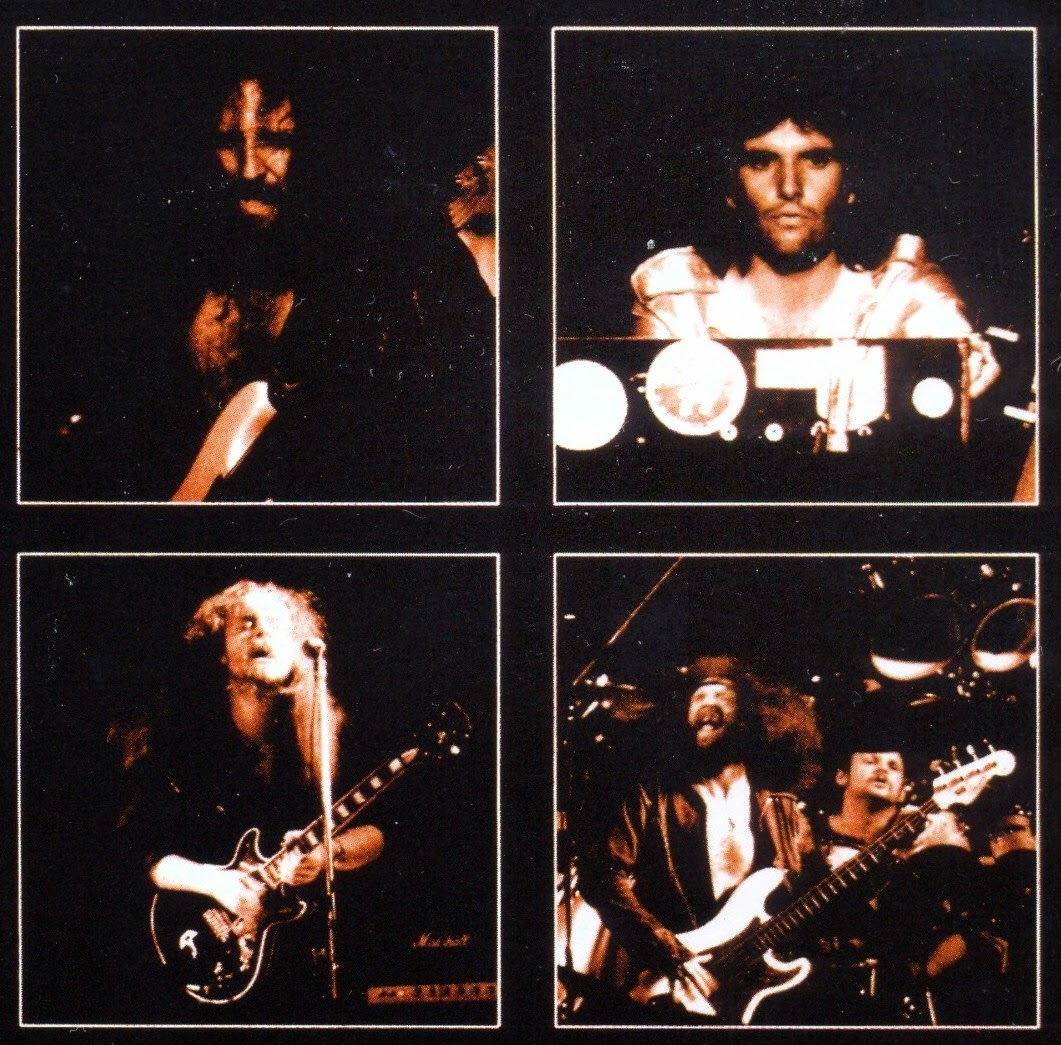
And that, patient reader, is where ‘Razorback’ comes in, now renamed BRB (Bromham/Rowley/Bartley) for ‘Razorback—First Bite’ on Angel Air Records after 27 years—rather oddly called 37 on the cover, but actually the connections stretch back 47 years so who’s counting. We learn from the liner-notes that Stray and Gordon Rowley’s pre-Strife The Emotions did the same audition in London’s East End in 1967. They were mutually impressed and remembered over the years, even in the same agency at one time. In 1984 Gordon had been invited to produce Stray’s fine ‘Live At The Marquee’, mixed back in Los Angeles while working in Graham Nash’s new studio.
Wild as their name, there is some serious razor riffing by Del Boy backed by the powerhouse of Steve ‘Basher’ Bartley (Nightwing, and recently Plain Truth) and Rowley for 10 tracks laid in an incredible five-day session in Rowley’s native Cheshire. All share vocals for melodic to acid rocking without let-up. Bromham’s Give ’Em Enough Rope kicks in fast and furious flowing into the longest track Faith Healer, a song by the Sensational Alex Harvey Band here reprised as a tribute to the Scot. Gordon was touring with him the night he died at Zeebrugge harbour and tried to resuscitate him. A slower Here I Go Again sounds US radio-friendly in the similarly ill-fated mode of the Medicine Head/Yardbirds venture Box of Frogs, while Good To Be Alive is period-anthemic with speaker phasing. Let’s Go is Bromham’s ode to Rowley’s new motorbike—Gibson Firebird against the speaker cabinet with tremolo for throttle to reproduce its 1500cc engine! Bartley-written Mercenary Man and Bromham’s Angel Love are tasty ZZ Top or Tony Joe White at his swampy best groove with licks to swing for.
Morning Dew reappears from that Stray audition of ’67; Nazareth or Grateful Dead fans might think it is theirs but would be wrong. But so is Del’s notes attributing it to Tim Rose: written by Bonnie Dobson in 1962, Rose actually tweeked a line to get a co-write credit fee, much to the late Dobson’s chagrin. BRB’s version owes more to the slow-burning subtlety of the original. The album closes with The Book: drum-driven thumping, blistering guitar-effects solo, and lyrics at the heart of rock ‘n’ roll. It leaves you with the wish for more of the same. The ’80s approach is neither Stray nor Strife exactly but a chemical amalgam that gelled from their very first song together, a fine testimony all the more remarkable for being the result of less than a week together. What links them to the neglected, lack-of-label-clout Strife and Stray, apart from ill-luck, can be summed up as top-notch musicians, powerhouse energy and ace solos by the bucketful.
Gordon Rowley’s ill-health meant the project couldn’t be continued and alas he had to retire from performing music. Fortunately he has had a successful career as a producer augmented by a horse-breeding business. Del Bromham went from strength to strength reforming Stray that continues to this day, also issued on Angel Air (‘Valhalla 2010’; ‘Live In Japan 2013’). The latter saw queuing round the block yet still play pubs alongside festivals in the UK and Europe. The same label also issued “more rootsie” solo albums (‘Devil’s Highway’; ‘Nine Yards’) by the guitar legend with guests including female vocals sometimes reconvened live. In 2006-7 Sanctuary brought out Stray’s back catalogue of eight studio albums on CD with BBC bonuses: if you haven’t heard these your love of great rock has a hole in it.
Del Bromham, now 63, was given the accolade of a Blues Festival’s Lifetime Achievement Award with Andy Fraser and Tony McPhee. He was surprised because not heavy metal or progressive if one thinks that needs a Hammond, yet hadn’t been always accepted by blues fans either. The fact that the modest geezer, dry humoured and looking like a gypsy king on a day off from his encampment, has so many great songs he hasn’t used a set-list for yonks, sums up this mainstay of the rock circuit. First inspired by the Yardbirds, Small Faces, and Traffic, the 13 year-old joined his elder brother’s The Traders whose wide-range included Tamla and Stax. In 1970 Spencer Davis asked if he could join Stray on stage. Along with the blues, all these elements subtly underpin his freewheeling rock style, like Strife.
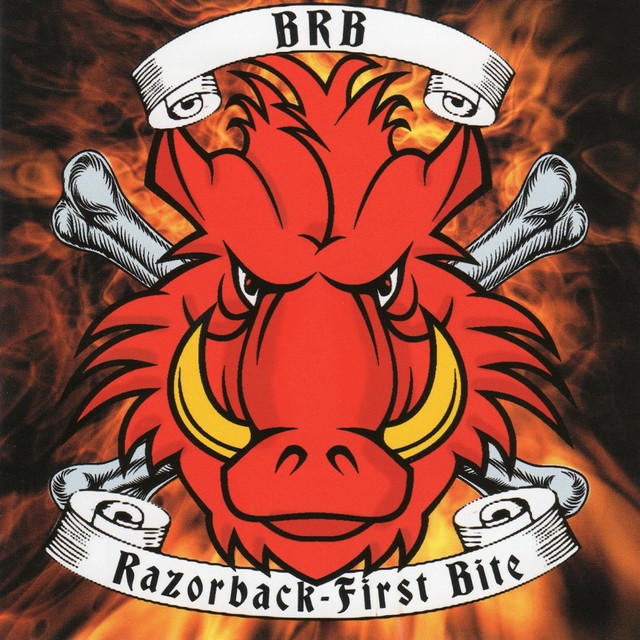
His first-ever recording studio had a strong coffee smell and to this day it always takes him back there. During a MetalTalk interview he said “to go, come back to the ’70s”, an interesting self-correction because proves his legacy isn’t gone but still with him. ‘Razorback’—not stadiums, MTV, Hard Rock Café or other hype but the essence of ego-free rock—fits perfectly into his long career. Thanks to Angel Air—who had only a second generation source for their superb remastering—this all too brief but fruitful session merging three legendary names has been saved. Razorback updates what Strife and Nightwing forged…and Stray continues from the time of shillings and pence to an age when multi-nationals now say they have none. Guess who’s to blame. They were for missing out on these great, warmly recommended bands.
Brian R. Banks
BRB – ‘Razorback – First Bite’ (Angel Air reissue 1987/2014)
All photo materials are copyrighted by their respective copyright owners, and are subject to use for INFORMATIONAL PURPOSES ONLY!

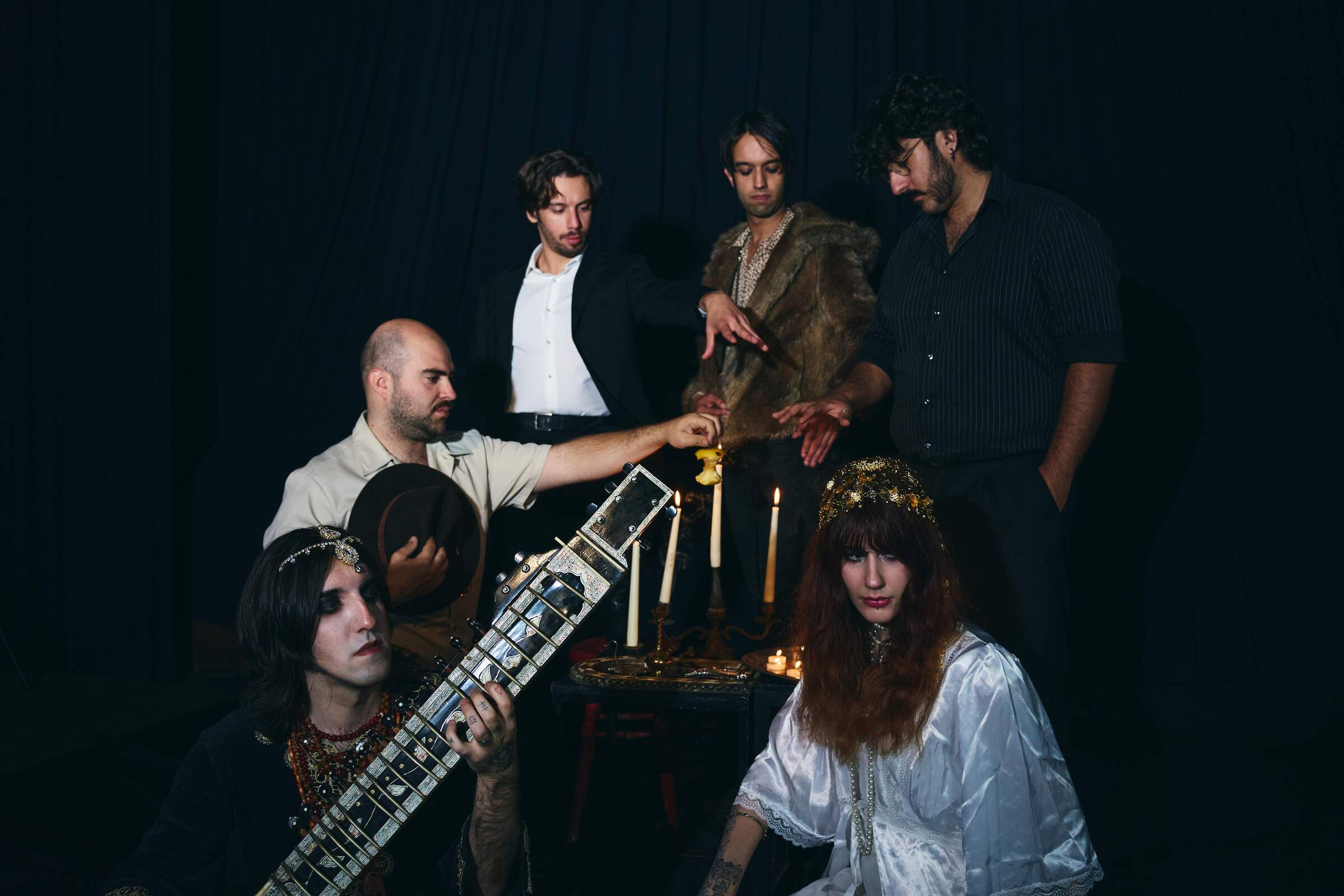
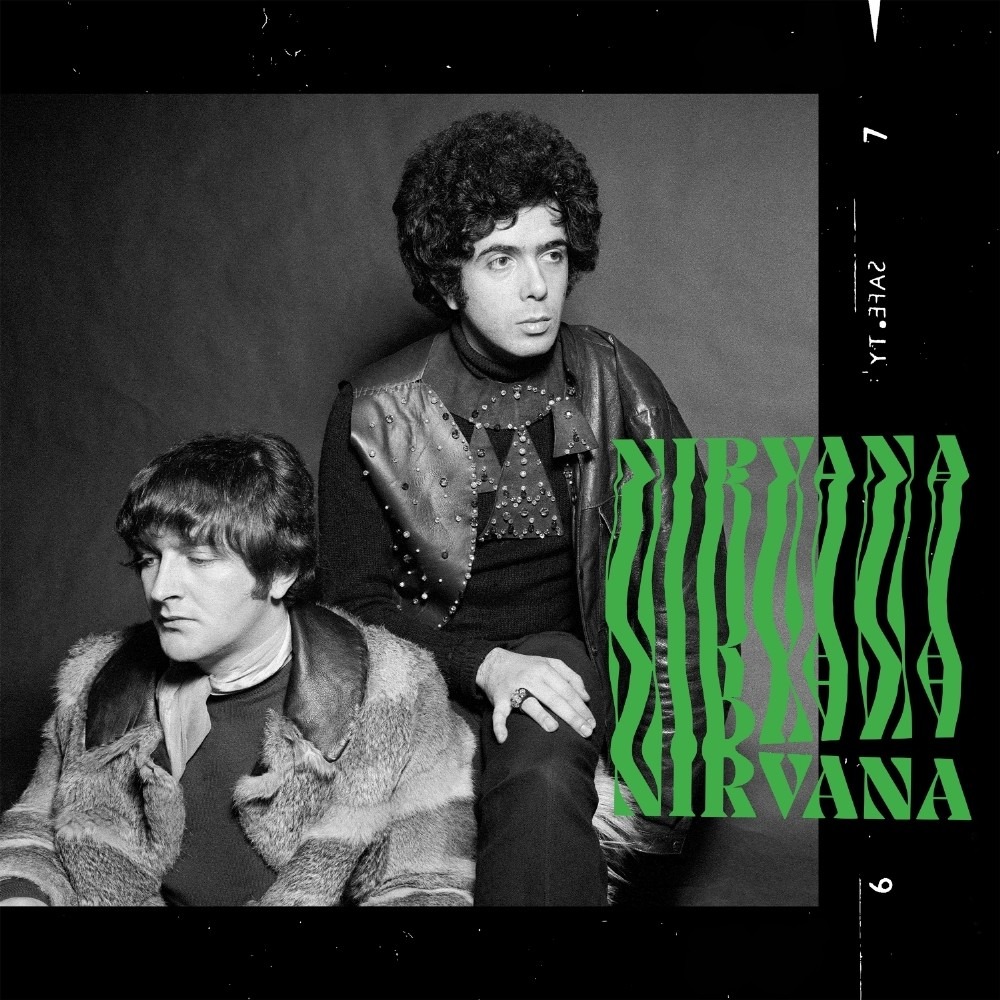
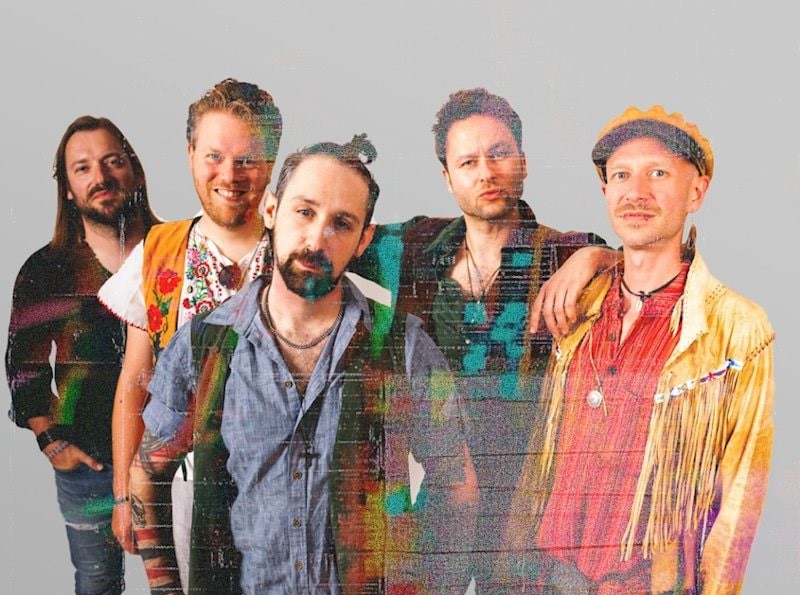
An excellent article. For more photos of Strife go to http://www.butterworth01.f2s.com and the only film that exists of the band is at http://www.youtube.com/watch?v=MWJdJ3JudUQ although, as noted in your article, it is in a very poor state.